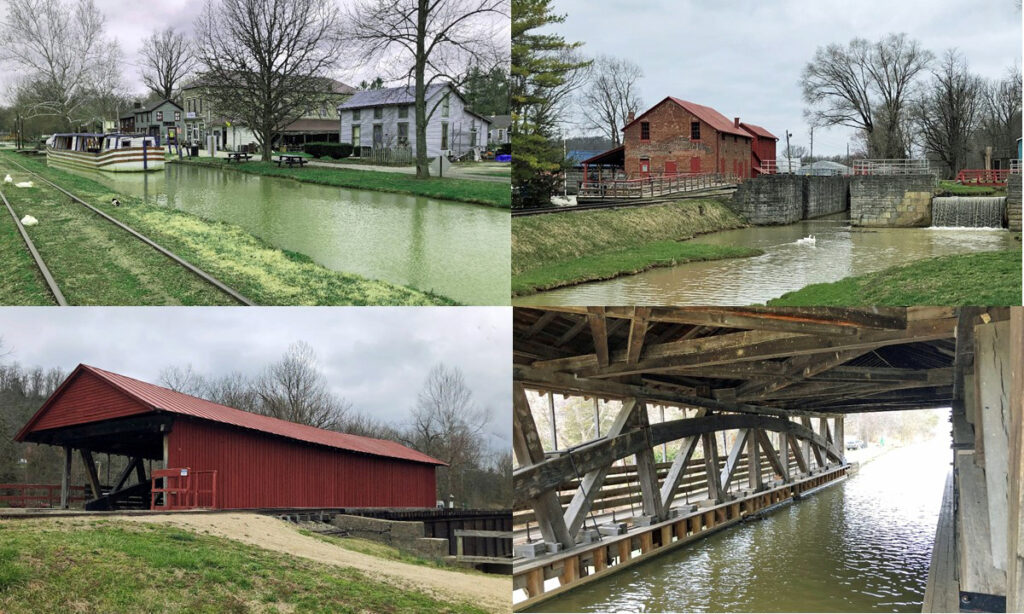Today we visit tiny Metamora, Indiana, a historic canal town 67 miles east southeast of Indianapolis.
In 1836, the Indiana Legislature authorized $1.4 million ($43 million today) for a canal extending from Hagerstown to Lawrenceburg. When Indiana went bankrupt in 1839, private interests took over the canal’s construction. Completed in 1847, the 76-mile-long Whitewater Canal employed 56 locks and seven dams to accommodate its large 491-foot drop. Towns sprang up along the canal route, including Metamora, platted in 1838 and named after a popular 1829 play. In 1843, a 75-foot wooden aqueduct built near Metamora carried canal water over Duck Creek, one of only ten such structures built in the United States. In 1856, a canal-powered flourmill was established in Metamora. The Whitewater Canal was not a success and was largely abandoned soon after it opened. Beginning in 1863, a railroad was built alongside the canal’s towpath.
Today, unincorporated Metamora (pop. 188) lies within the Whitewater Canal State Historic Site and includes both original buildings and some period structures moved from other locations. A water-powered mill in a two-story brick building, built in 1932 to replace the burned-out original mill, grinds corn and wheat into flour available for purchase. On selected days from May to October, the non-profit Whitewater Valley Railroad offers a five-hour round trip on an antique train from Connersville to Metamora and/or a short trip within Metamora. On occasion, a horse-drawn canal boat takes riders through the reconstructed aqueduct, the only one in the country still functioning. A 2.6-mile hiking and biking trail along the canal provides an opportunity to see the picturesque countryside. About 40 shops and eateries with friendly proprietors cater to the needs of visitors. A trip to Metamora offers a unique opportunity to experience a nineteenth century canal town, with the possibility of a train ride to boot.
